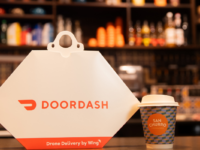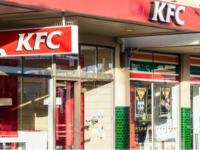The right location is vital for any bricks and mortar business. It can make or break it.
These 10 key steps help you spot, leverage and maximise the opportunity and dollars that stay hidden in the location of a retail site location.
In a fiercely competitive forum it is a constant struggle to be heard in the noise. Is the message from the business compelling enough for the target market to hear and reach out for products or services? A combination of right message for the market and ensuring that either the market is able to reach us or we are able to reach the market using the right mode is vital for success.
We all know that there are less than 25 per cent businesses that compete successfully, grow continually and genuinely add true value to the market. This only happens when the message, market and mode of engagement is clear and relevant.
A very strategic data driven investigative process designed to maximise your investments and capitalise on benefits could help.
Define success
Business operates under many level of hierarchy:
- Things that happen in the store (staff age, number of staff, number of products, how often it is stocked etc.), Things that happen in the site (decisions that business makes, signboard, accessibility, parking etc.).
- Things that happen in a trade are (demographics, psychographics, population coming in, population going out, tourism, how far the customers are willing to travel, how far the business delivers to customers etc.).
- Things that happen in the region (policy changes, major developments etc.) besides this, there are other geopolitical and national issues that extend to state, country or extend national boundaries.
Without any preconceived ideas, the first stage is to brainstorm and list all the potential factors that may positively or detrimentally impact the business in question at a location.
Step 1: Identify factors for success
The factors you choose will need to support your end game. You may be looking for expansion or to prioritise your investments. Irrespective of where your preferences lie, the decisions made should consider any upcoming demographic shift. To achieve this you need data that is accurate, current and of high quality so that the decision will stand the test of time.
You need to understand:
- The scope of business both now and in future.
- The overserved and underserved markets.
- Customer transaction patterns by location, time, product and proximity to store in purchase decisions.
- Competitive intensity that may impact the business in question.
- The change in socio economic characteristics.
- How to tailor the message through the relevant channels.
It is very much like peeling the layers of onion, you need to keep going as far as you need to go.
Step 2: Understand the trade area
Retail trade area analysis helps in describing a target market. It is the reach of customers for any given type of business, it is the resistance in travelling the customers have to overcome to get to the business. For a coffee shop it can be a few minutes walk but it could be a 30 minute drive for a furniture store.
Once we understand the catchment area or trade area we can easily segment the profile of customers in that area and allocate spend against each customer at that location. The accuracy of the model is based on the data used and drive time data is the most useful.
The trade area is then generated using gravity models that take competitive intensity and attractiveness into account to calculate the probability of customer visits.
Step 3: Isolate and prioritise key factors
It is imperative that business understands the relationships between key revenue drivers and trade area demographic, customer profiles etc. Some of the factors can include bank transition data in a particular category that helps benchmarking consumption.
In the absence of bank data proxy data depicting target market or simulation data can also be used. Data from multiple sources including the retailer’s own data with customer information, population, demographics and if needed data from many other external providers can be leveraged to identify the positive and negative contributors to business.
Step 4: Understand the infrastructure issues
The desirability of a retail location can be based on its centrality and accessibility. It is generally assumed that the residents are look-alike, or they share a common demographic and behavioural set of attributes.
The infrastructure or transport factors are looked at based on the type of target market. These factors can include public transport, annual average vehicular traffic, foot traffic and parking.
Step 5: Identifying and prioritising profitable areas
At SVB Group, once the ideal factors are identified, we run an algorithm to rank areas where these favourable situations exist.
Irrespective of the population concentrations the rank ordering suggests that given a set of conditions business will benefit when located in a higher rank zone when compared to a lower ranked zone.
Things to keep in mind are competitive store locations (competitive benchmarking), new dwelling approvals, movement of containers, taxation statistics and property sales.
The next step is identifying best locations within the zones.
Step 6: Benchmarking locations
There is another complex technique we follow at SVB Group which is to benchmark the probability of success, adjusting (if needed) based on attractors and repellers for a retail location.
We look at the impact of another contributing asset that enhances (positive or negative) outcomes and we adjust the revenue outcomes accordingly.
It is not a direct deduction that a competitive store will end up negatively impacting the store in question. It has been found that when businesses are co-located the overall attraction of the area goes up
Step 7: Understanding demographics
Detailed demographic reports for different areas give a true reflection of what is happening in the ground. An area in step 6 accompanied by a detailed demographic report or any additional and relevant reports help paint a true picture.
In many cases different datasets for a region (SA1, SA2, Postcode, Suburb or a region based on a criterion are combined to create a location report, prospect store report franchise report or any document which franchisors can give to franchise buyers.
Step 8: Market in the gap
Sometimes looking at “what if” scenarios can help analyse the impact of new competitors, store consolidation, expansion and cannibalisation.
In the case of franchised stores with multiple locations, specific pockets of opportunity can be looked at by running a gap analysis. This could be based on the standard market catchment for the type of business or tailored for specific needs of the business
Step 9: Cannibalisation
It’s important to get a balance of distance between outlets. You want to ensure that customers who are at the fringes of an area have an alternative option to shop particularly if there are in the gaps between the catchments and that falls in lucrative areas.
But too close proximity of stores may lead to too much cannibalisation and over-investment. This may not be evident in the short term but as the market saturates it becomes more obvious.
Step 10: Online or digital locations
The same approach applies to the online world. Digital locations are the places that reach the customers in the virtual space, however the fulfilment may be done in the real world.
Important data to provide the right information can include a customer’s purchase history, tracking an IP address, monitoring social fingerprint etc. ‘
Once the digital finger print is identified rest of the analysis process is very similar to bricks and mortar stores.
Using location intelligence to organise and understand complex phenomena and unify it with market analytics and customer analytics helps us understand trends in customer data, market data and demographics to help form clear, reliable, repeatable views of where emerging opportunity exists in relation to an existing retail network.
Following the above 10 steps will truly give your retail site and your business the edge it needs to be successful in the current age.
















